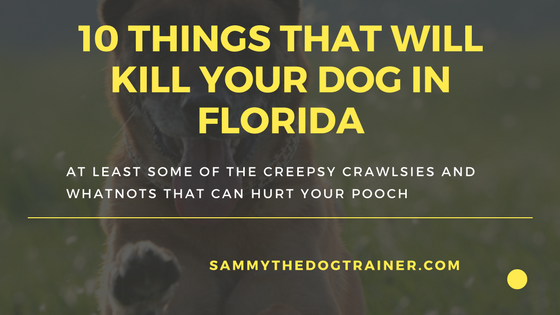The Barking on the Leash Podcast
The Barking on the Leash Podcast- How to Stop Your Dog from Going Ballistic
Or click on this link: The Barking on the Leash Podcast
Transcript:
Hey there it’s Sammy the Dog Trainer coming to you through your phone various other technological listening type devices. Before we start our main topic of today’s podcast, I would like to take a brief moment to remember the life of Roxanne aka “Roxy” Bonnet. She is my best friend’s Pit-bull and she passed over the rainbow bridge tonight. That’s never an easy thing for anyone, but now that sweet pittie, who used to be in so much pain and had so much trouble moving, can now run freely. As we remember her life and celebrate the joy she brought us, I invite you too to do the same for your loved ones who have joined Roxy in the afterlife. I believe there is a special place for such pure beings and we will all be reunited with those we love in the end.
So today’s topic is on a completely different note. Sorry to change gears so suddenly like that on you. But no, today we are going to talk about dogs barking while they are on the leash. This is one of the main problems I get contacted for as a dog trainer and it can be one of the most confounding problems for owners. People say, “I don’t understand. Fifi loves other dogs. But when Fifi sees other dogs when we’re out on a walk, Fifi goes ballistic.” Why does Fifi, who allegedly loves other dogs, turn into a velociraptor when she sees one out on a walk?
The answer to in behaviorist speak is barrier aggression or barrier frustration. Which is nice and everything but what the heck does that mean? Well, to explain it, we have to take a little adventure into our dogs’ brains. Now dogs, when they feel heightened emotions or heightened energy levels, do not make as clear of distinctions all the time between those newly amped up feelings. Happy excited can sometimes blur with crazy excited or fixated excited. Sometimes. That doesn’t mean your dog, who is happy to greet you after your day at work is going to confuse happy excited with velociraptor excited. The ingredient that adds an element of complexity to the mix is the leash.
The leash acts as a barrier. It restricts your dog’s movement and prevents him or her from doing certain things on the walk. This is, of course, by design. We don’t want our dogs indulging in every impulse they feel when they are out with us…oh, and it’s against the law in most situations to have your dog off the leash. Because we do need that control. However, your dog is keenly aware of his or her mobility being restricted by the leash. It becomes a barrier to him or her from greeting other dogs they see on the walk. The barrier becomes frustrating because they can’t do what they would normally do, which is rush up and greet the other dog, and so their frustration manifests itself in aggression, or barkety bark bark barking.
I love dogs, but sometimes the way they choose to express themselves is not always the most appropriate. “HEY YOU! I WANT TO MEET YOU! THEREFORE I SHALL BARK LIKE A DOGGY AX MURDERER!” Because that’s going to win you a lot of popularity contests. Not really.
Okay so what do you do about this behavior? Because you can’t keep walking a velociraptor. And you certainly can’t just let you dog run up to every other dog on your walk willy nilly because that’s just asking for trouble. No, one of the standards for good socialization of a dog is that the dog can behave on the leash around other dogs. Now, even if your dog is not going to be a dog park dog or a doggy daycare dog, he or she can still always behave on the leash around other dogs. Actually this is part of the Canine Good Citizen test sponsored by the American Kennel Club. If you’re looking for a good standard of obedience for a pet dog, then I encourage you to check out that program and work towards getting your CGC title. I’m one of their certified evaluators, so if you’re in the Tampa area, contact me if you’re interested in doing that program.
So regardless of whether your dog actually likes other dogs or not, he or she can behave on the leash around them. Farmer’s market’s, Lowes and Home Depot, outside restaurants- all these should be available to you and your dog. That’s nice, but how to I get there from here?
So with anything in dog training, you reward good behaviors and you correct THEN replace bad or undesirable behaviors. A lot of people make the mistake of trying to replace an undesirable behavior without correcting the bad behavior. So what happens when your dog goes ballistic, is that they enter a heightened energy zone that is not really workable for obedience. So you have to snap your dog out of that crazy high red zone in order to get a workable canine. I like using sound corrections for this. There are some trainers out there that think startling your dog when they are going ballistic is mean. And there are methods to work your way up without having to resort to that, but generally speaking they take a lot of time and sometimes are not as effective as they would be if coupled with a humane, appropriate corrective measure like a sound correction.
So what is a sound correction? It depends on your particular dog what is going to be appropriate and what might be overkill. But your options can include compressed air, like Pet Supermarket’s Pet Corrector or even like a computer duster. I used a handheld bike pump for a while but I kept breaking them so I switched over to the Pet Corrector. I buy them in bulk from Amazon. Oh, and if you want to help out my little small, veteran owned business, if you click on any of the Amazon affiliate links on my website and order stuff by going through those links, it doesn’t cost you anything but it gives me a small percentage for my business. So I’m super appreciative of people who help out Camp Sammy like that.
So compressed air is an option. If you have a mega-thick headed dog and the compressed air doesn’t work, you can try a klaxon or a boat horn. You can get those in the fishing section of Walmart. They also make this device called a Doggy Don’t device. It actually sounds just like a taser- like that crackle crackle sound, and has some light, but it doesn’t actually tase things. I recommend these for families with kids, because you don’t want little Johnny tasing little Susie. But if you’re a single person and don’t care, I’m pretty sure the tasers that make the same sound are less expensive. But please don’t actually tase your dog. Unless your dog is going to kill somebody, but yeah. Just use the sound. Now those are kind of drastic measures. A less intense measure could be shaking an empty metal soda can with pennies in it by your dog’s head like you’re going to bite him with it. But don’t actually smack your dog in the head with the can, cause yeah…don’t do that.
Ok, so once you’ve said NO and used your corrective measure, you’ve essentially busted your dog back down into a workable energy zone. Now if you don’t do anything with this opportunity, then your dog might go right back to being a velociraptor. So use this opportunity to do some obedience. This does two things for you. The first is that it keeps your dog engaged on you, working for you, and prevents them from going back to crazy energy zone. The second is that it turns the situation into a positive situation because now, once your dog completes a command for you, he or she is magically a Good Doggy again! Hurray! So now, the anxiety producing event of passing others on your walk is now an opportunity to earn treats and your good graces. That means you have to be prepared with the correct tools, whatever is appropriate for your dog, for your walk. This means a way to reward him or her as well. Well, Sammy, I don’t want to carry treats with me on a walk….that’s nice. Not really that’s lazy. For now, while you are reworking this behavior especially, you need to tote your tools, both for correcting and for rewarding your dog.
Now, I also like to teach my dogs a Leave It command. I start off inside using a treat to teach them the concept that Leave It means Ignore The Thing. It doesn’t mean wait in abated anticipation for the thing. So don’t do this with like, your dog’s dinner, or something. What I do is I put the treat on the ground, and I use my body language and sometimes at first you have to bodily block your dog from snatching the treat. Here you can use your sound corrections. Leave it, then if your dog still goes for the treat, use the sound thing and say NO, and repeat the command. Usually your dog will back up or run away. Immediately turn into praise mode then. Yay! Good Leave it! Because at that point your dog is no longer focused on the treat. Pick it up off the ground and hand a piece to your dog. Don’t let them snatch it off the ground. Repeat this, immediately rewarding your dog when they look away and ignore the treat. Usually dogs are pretty quick on the uptake with this one. They figure out that Leave It means ignore the thing pretty quickly. Now, you can start applying it to other things. Furniture you don’t want chewed on, cats, babies, and tada- other dogs on walks.
What this does is it gives your dog an opportunity to follow the command, earn rewards, and never receive a correction. Because you both see the other dog coming. You give your dog the command Leave It! And then if your dog does well and leaves it, yay! Celebrations, rewards, treats! And your dog never has to get corrected because he or she did exactly what she was told. This makes passing other dogs even more enjoyable for your dog, because now she understands what she’s supposed to be doing, because you told her, and it’s an opportunity to earn rewards and your good graces. This lessens anxiety in dogs because it’s very clear now what it is they should be doing. Now, dogs aren’t perfect and neither are we. So have your corrective measure with you in case your dog slips up and does not perform their Leave It command. But also don’t beat yourself up too much if your handling skills are a little lacking. It takes practice. Even though it seems simple when you explain it in theory, in practice good dog handling takes a lot of work and experience. But you guys can grow together.
So that’s all the time we have for our podcast today. Real quick, before you go, check out that sponsor this podcast button on Anchor.com or email me at sammythedogtrainer@gmail.com for details on how you can keep this podcast going and get your very own topic selections for podcasts. Thanks again for listening and supporting small, veteran owned business. Cheers!
-Sammy the Dog Trainer









Some please help me pick out the best product among those mentioned on the site.
ReplyDeletehttps://sugarlandvet.com/